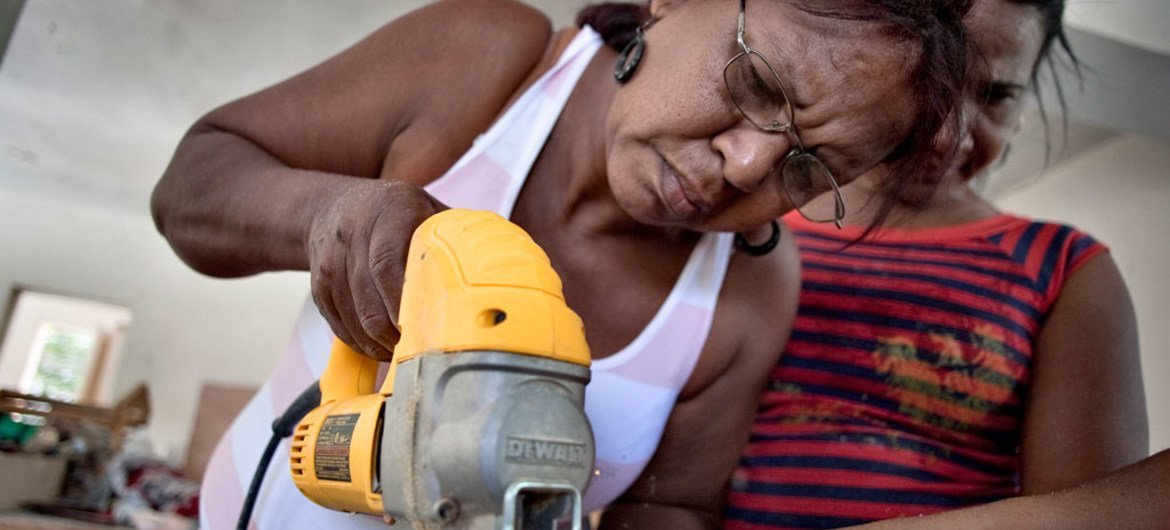The results of our first robustness check in which we estimated a transfer function with all the cohorts and variables produced essentially the same results as our primary test. As described in more detail in eTables 1 to 3 in the Supplement, the election-variable coefficients for male and female births remained significantly greater than 0. The results of our second robustness check, in which we used the methods of Chang et al33 to detect level shifts, slope changes, and spike-and-decay sequences in the data, also converged with our primary tests.
Latina women are the most likely group to be paid at or below the minimum wage, with 5.7% of wage and salary workers earning this amount. Of women in the workforce with advanced degrees (master’s, professional, and doctoral degrees), Latinas earn the lowest median weekly earnings of all racial and ethnic groups in the United States. Despite discrimination in the workforce, Latina participation is on the rise. From 1970 to 2007 Latinas have seen a 14% increase in labor force participation, which the Center for American Progress calls “a notable rise.” Delays in treatment or inadequate treatment could be due to language barriers, healthcare access, and cost, or to a bias on the part of the healthcare team.
NHBA is a national network of undergraduate student organizations dedicated to helping Hispanics launch successful business careers. Through our family of 41 chapters, they provide career development, professional networking, and community building opportunities to their undergraduate members. Barriers to work often give rise to business ownership and entrepreneurship in the Hispanic community. Mora says her research finds that a lot of Hispanic small business growth is driven by women, particularly immigrants. Entrepreneurship has helped bolster employment, but may not close the wage gap if it stems from being locked out of other forms of work, Mora says.
Unfortunately, Hispanic women are subject to adouble pay gap—an ethnic pay gap and a gender pay gap. And, this pay gap widened over previous year when it “only” took until November 1 for Hispanic women catch up to non-Hispanic men. We used community-based participatory research approaches to engage members of the ethnically diverse Latina community at all stages of the research. They participated in conceptualizing the study aims, adapting the HIV intervention materials, and developing assessment measures and recruitment strategies. The outreach workers were involved in identifying and selecting recruitment sites, conceptualizing recruitment strategies, developing culturally appropriate and appealing recruitment materials , and disseminating recruitment materials.
We’re dedicated to empowering women to take care of their hearts through education, lifestyle and, when needed, expert medical care. “By partnering with a physician who understands their personal and cultural heart care needs, Hispanic-American women can lower their risk of heart disease and learn to adopt healthy prevention strategies,” says Dr. Kim, who is a member of the Scripps Women’s Heart Center care team. Heart disease, which is a variety of conditions that affect the heart’s structure and function, is the leading cause of death for all women, especially for White and African-American women. It is the second leading cause of death for Hispanic women, (19.6%), just behind cancer, (22% percent), according to the Centers for Disease Control and Prevention . Hispanic women face multiple challenges that put them at risk for developing heart disease, including high rates of diabetes, obesity and hypertension.
Many are also face challenges due to language barriers and access to health care, which can make it difficult for them to prevent or treat heart-related conditions. In 2012, the poverty rate for http://galeon-sarbinowo.pl/?p=24246 overall was 27.9 percent, compared with the rate for non-Hispanic white women at 10.8 percent. Poverty rates for Latina women, at 27.9 percent, are close to triple those of white women, at 10.8 percent. The number of working-poor Latina women is more than double that of white women, at 13.58 percent, compared with 6.69 percent. According to a 2010 study, the median household wealth of single Latina women is $120, compared with single white women’s median household wealth of $41,500.
Her stepfather’s later political appointment brought her family to live in Santa Fe where her maternal uncle was a major politician who had played a key role during the state constitutional convention. She used those connections in her fight for suffrage and also played a key role in ensuring that the state legislature ratified the 19th Amendment in February 1920.
Latina women make disproportionately less than their male and non-Hispanic white counterparts. These disparities are leaving a growing portion of our population more vulnerable to poverty and its implications. The increase in revenue has been even greater, with Latina-owned businesses earning 57 percent more from 2002 to 2007, when compared with a mere 5 percent increase among all women’s businesses over the same period. In 2012, data showed that the receipts of Latina-owned businesses totaled $65.7 billion; this is an increase of 180 percent from 1997 to 2013. Latinas hold only 7.4 percent of the degrees earned by women, though they constituted 16 percent of the female population in 2012.
- But as she grew older, she became determined to stop the disease that claimed the lives of too many family members for so long.
- Hispanic women are 2.2 times more likely to be diagnosed with stomach cancer, and 2.4 times more likely to die from stomach cancer, as compared to non-Hispanic white women.
- Like many other Hispanic women, Eva spent her time as a caregiver for her family rather than thinking about herself.
- Both Hispanic men and women are twice as likely to have, and to die from, liver cancer than non-Hispanic whites.
- From , Hispanic men were 10 percent less likely to be diagnosed with prostate cancer than non-Hispanic white men.
Data collectors secured the interview data and were blinded to women’s assignment to the intervention arms. The health educators described how unhealthy relationships, including those characterized by abuse and coercion, can create barriers to practicing safer sex. This session also addressed reproduction, the female anatomy, and the value of one’s body.
The importance of Hispanic women in the workforce is expected to increase. By 2028, they are forecast to account for 9.2% of the total labor force, up from 7.5% in 2018, according to the Bureau of Labor Statistics. Latinos — both women and men — will account for a fifth of the worker pool by then. Macias went on to graduate from Yale University and become one of 12 million Hispanic women who are a growing share of the U.S. labor pool.
Top Cancer Sites For Hispanics (2012
The pattern among men also contrasts with the Great Recession, when the rate of job loss among white and black workers was steeper than among Asian and Hispanic workers. Bensley L, Van Eenwyk J, Wynkoop Simmons K. Childhood family violence history and women’s risk for intimate partner violence and poor health.
The second study18 found that prenatal exposure to the passage of a restrictive immigration law in Arizona coincided with lower birth weight among children born to Latina immigrant women but not among children born to US-born white, black, or Latina women. Furthermore, women pursuing college degrees are on average older than their male counterparts, and tend to go into lower-paying career fields at disproportionate rates. Women also hold an unequal share of the nation’s outstanding student-loan debt — two-thirds of the pie, according to the American Association of University Women — despite the fact that fewer women have college degrees. While women are attending college at a higher rate than men (56 percent of four-year-college enrollees were women in 2017), enrollment figures don’t match their share of student loan debt. In fact, the pay gap is widest among Latina women with a college education, and widens as higher levels of education are obtained.
In addition to finding that unexplained wage gap for Hispanic women is greater than the aggregation of the absolute ethnic and gender effects, we also identify particular groups of Hispanic women at an even greater disadvantage. Researchers analyzed 1,293 women who gave birth between April and June at Pennsylvania Hospital and the Hospital of the University of Pennsylvania, which combined represent 50 percent of live births during that time in Philadelphia. The research team’s serological test utilized a SARS-CoV-2 spike protein receptor binding domain antigen and a modified ELISA protocol. Researchers used samples stored at the Penn Medicine Biobank collected from 834 people prior to the pandemic and 31 people who recovered from known Covid-19 infections to test the efficacy of their antibody test. The researchers also tested samples from 140 pregnant women collected before the pandemic.
#Blacklivesmatter
If you take care of your Latina woman, she’s going to make sure that no one can take care of you like she does. They want to communicate (in case you couldn’t tell with all my writing and expressing myself through fashion and dance HAHA). Latina women need to feel needed, so they subconsciously let a man feel needed. Culturally, many of us in heterosexual relationships haven’t let go of traditional practices. The opening of doors, letting women go first, and men walking on the outside of the sidewalk are all old-school practices in courtship.



:format(jpeg):mode_rgb():quality(90)/discogs-images/R-436340-1283335958.jpeg.jpg)


